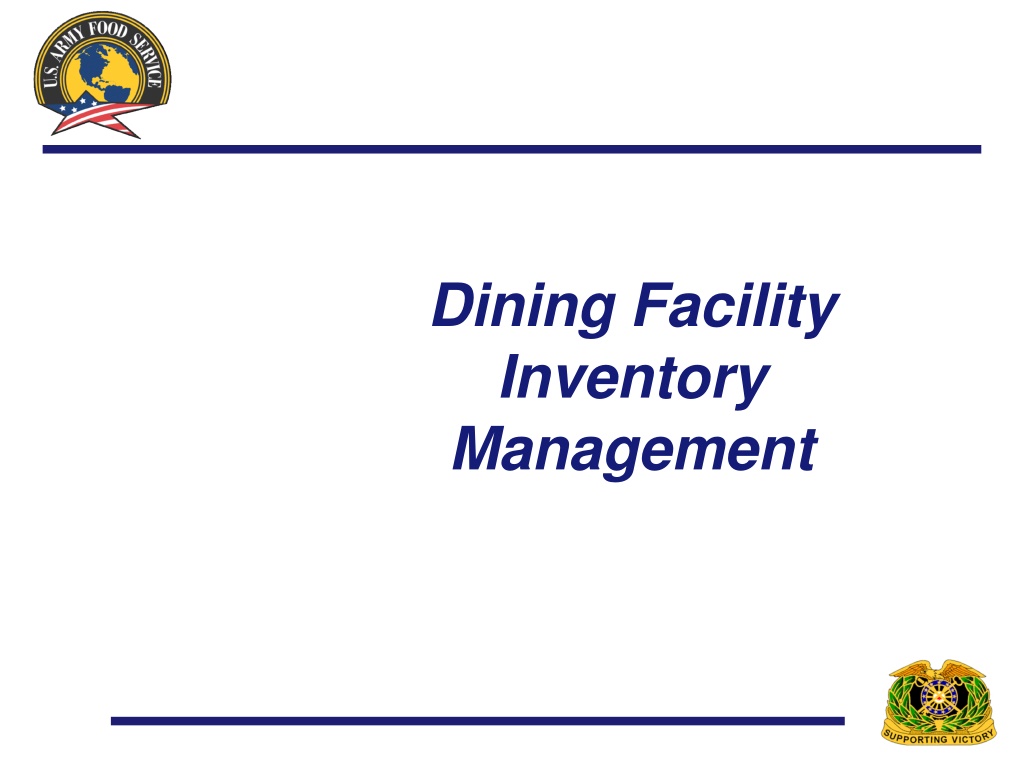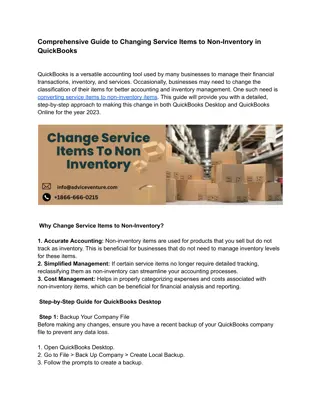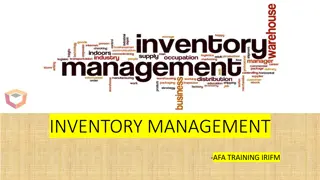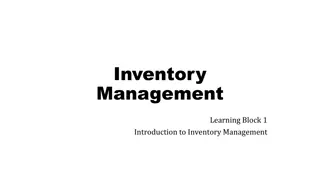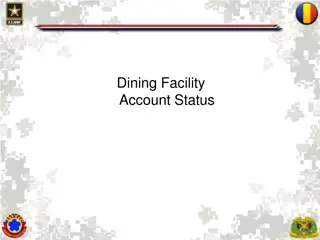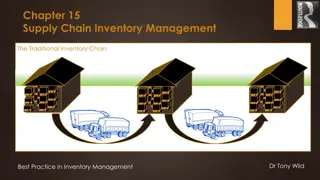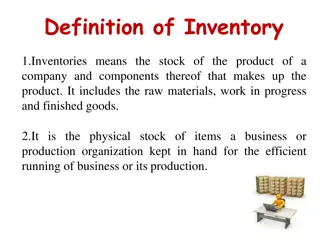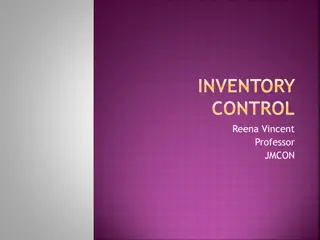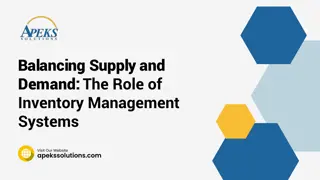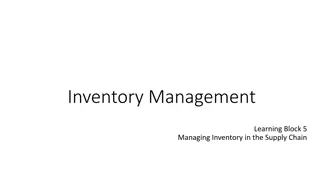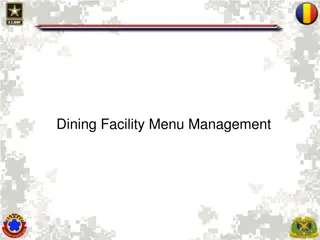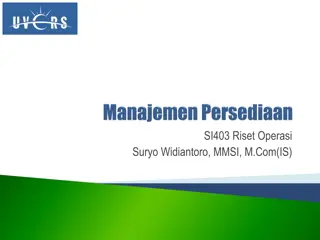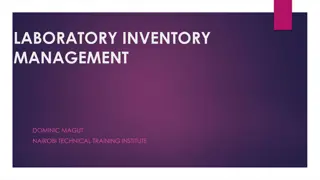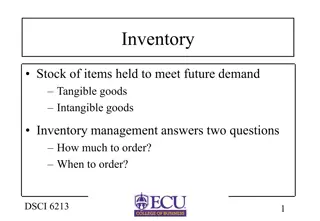Effective Inventory Management Strategies for Dining Facilities
Efficiently managing inventory in dining facilities is crucial for financial success. Learn how to set inventory objectives, handle surplus stock, reduce excess inventory, and control inventory effectively through automated tracking tools and targeted stockage objectives.
Download Presentation

Please find below an Image/Link to download the presentation.
The content on the website is provided AS IS for your information and personal use only. It may not be sold, licensed, or shared on other websites without obtaining consent from the author. Download presentation by click this link. If you encounter any issues during the download, it is possible that the publisher has removed the file from their server.
E N D
Presentation Transcript
Dining Facility Inventory Management
Inventory Objective Value $60,000.00 Last Month s Earnings: Divide by Last Month s Number of Operational Days: 30 Equals (Average Daily Earnings): $ 2,000.00 Times Target Days of Inventory X 6 Inventory Objective $12,000.00
Surplus Inventory Value $20,000.00 Last Month s Ending Inventory: Minus Inventory Objective Value: $12,000.00 Equals Surplus Inventory Value $ 8,000.00 DSS Notes: If the dining facility was not open the previous month, the inventory value (EOM inventory) will show as a surplus. If the dining facility had less than 100 average lunch headcount for the previous month, the inventory objective is increased by 25%.
Reducing Surplus Inventory Do it over a period of months time. Don t start running out of food. Must first establish good menu planning, ordering and inventory control procedures. Key First Step: Establish a Cycle Menu The Menu is the central management document around which the whole food service operation revolves. A Cycle Menu is a menu for a certain number of days or weeks that is repeated after a set amount of time. Accounting Period 1 Month.
Inventory Control Date all food items with date received. Check dates in ration storage areas on a routine basis to determine if they are being used within a 6-day period. Food may no longer be on the Cycle Menu. Food may have limited use on the Cycle Menu. SPV ordering sizes too big. Be careful about reducing Prime Vendor Package sizes ($$$=Distribution Fees). DFAC orders rations without checking: BOH Due-ins Due-outs
Inventory Control Use automated (EXCEL) Disposition of Subsistence to track food items over a menu cycle or month s time. Start tracking next month. Look at a previous accounting period. Use: Monthly Inventories SPV Receipts Kitchen Requisitions AFMIS Disposition of Subsistence (coded A,B,C) Determine if your running balance is set at the right level. Too high = surplus inventory Too low = run outs
Par Level Management Targeted Stockage Objectives Work well with routine/daily use items (predictable movers) Can use to establish standing orders Set Par Levels based on: Cycle Menu Expected Headcount Usage History Everybody must be comfortable with Par Levels. Reduced Inventory = Less Inventory work.
Ordering & Inventory Control Ordering Rations: BOH Due-ins Due-outs Par Levels Increased Headcount = increased stockage levels. Conduct and track weekly inventories. Field residuals Large quantities Slow or non moving items
Dining Facility Inventory Management
